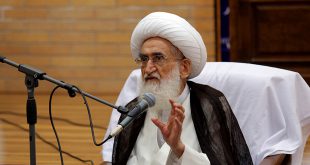Contrary to their appearances, bāṭinī (esoteric) movements have generally been political projects; a kind of opposition and rebellion against the predominant political and theological movement. The premise of these movements is that the religious interpretation (tafsīr) of the predominant movements is only congruent with the ẓāhir (exterior) of the Sharīʿa and the sacred text, while ignoring or marginalizing their bāṭinī meanings. Therefore, the mystical and bāṭinī movements that develop on the periphery of, and vis-à-vis, the official readings of religion call for the esoteric interpretation (taʾwīl) of the sacred text in order to present its inner, bāṭinī meanings.
This itself has a very strong political and social weight. It means that a bāṭinī and esoteric ideology stands against and challenges the legitimacy of the dominant power and religious interpretation. It is for this reason that the ʿAbbāsid Caliphate reacted so quickly to the bāṭinī, ghālī (extremist) and Fāṭimid daʿwa movements that proposed alternative legitimacies to succeed them.
Nevertheless, in brief, bāṭinī movements usually begin by standing in opposition to the ruling hierarchical system and challenging the official authority of religious institutions. However, they themselves gradually call for an alternative hierarchy that sits in place of the power of the caliph/Shaykh al-Islām. The Quṭb, Shaykh, the Fourth Pillar, Bāb and similar concepts are alternative authorities for mystical, bāṭinī, and ghālī orders. In mystical and bāṭinī thought (with all its differences and details that are not the subject of discussion here), in order to understand the bāṭin (hidden inner meanings) and interpret the sacred text, as well as to guarantee esoteric “salvation” and access to “gnosis” (maʿrifa), it is necessary to rely upon an intermediary, seeking the “path” from them and thereby acquiring guidance. From the point of view of the theological dimension, this intermediary is in reality the intermediary to interpreting the sacred text, understanding the bāṭin of the Sharīʿa and to finding the path to the truth. One must become a wayfarer (sālik) of the spiritual path (ṭarīqa) through the intermediary of the “Quṭb”. The intermediary of salvation in the metaphysical dimension is also the intermediary of existence, divine emanation (fayḍ) and the “water of life”. Through the intermediary of divine emanation, it becomes possible not only to know God, who is deemed to be inaccessible, but rather the emanation of His existence only reaches the creation through intermediaries in the first place. Like Sūfism, ghālī and bāṭinī Shīʿism has had different and various layers and veins of this idea within it.
Imāmī Shīʿism, the moderate path, has been opposed to any elevation of the Imām to the position of God and to the doctrine of tafwīḍ (delegation)—despite its acceptance of the superior position of the Shīʿa Imāms as the intermediaries of divine grace (luṭf) and possessors of infallibility (ʿisma). In the moderate movement of Imāmī Shīʿism, the Sharīʿa and the outward meanings (ẓawāhir) of the sacred text hold authority (marjaʿīyya). In this point of view, the existence of the infallible Imām is necessary to interpret the Sharīʿa and guarantee its preservation, and is considered a “grace”. In turn, the jurist (faqīh) acquires authority in the context of an ijtihādī understanding of the Sharīʿa in the occultation of the Imām. In this sense, the jurist is the successor of the Imām in the time of the occultation. The theory of wilāyat al-faqīh is in fact the theory of the successorship (deputyship) of the Imām in the time of the occultation. On the other hand, in bāṭinī, taʾwīlī and Sūfī viewpoints, the “Shaykh” or the Quṭb or the “Bāb/ Ḥujja” takes the place of the “Imām”.
In the extremist points of view of these movements, the Sharīʿa gives its place to the Ṭarīqa or taʾwīl (allegorical interpretation). In some of these bāṭinī and taʾwīlī movements, the Sharīʿa is only a necessity of the period of “concealment” (sitr), and after that it is the turn of the period of “unveiliing” (kashf) of the truth and the “manifestation of the Resurrection”. Throughout history, the moderate path of Shīʿism was opposed to these kinds of interpretations that drove the Sharīʿa to the margins or ruled that it had been abrogated. It considered the essence of religiosity to lie in submission to the Sharīʿa and the outward meaning of the sacred text while at the same time believing in the necessity of ijtihad and tafsīr. Although Sūfī or bāṭinī orders are not theoretically counted as political, their political motifs must be understood in light of their views on Sharīʿa, taʾwīl and authority. In reality, by proposing a substitute authority and legitimacy, these gnostic and bāṭinī systems were extremely concerned with politics and social and political power.
In practice, throughout history, we have generally witnessed the emergence of complex orders with hierarchical structures from the bedrock of simple early Sūfī or mystical orders—who sometimes quarreled to seize political power. In reality, instead of a caliph, we have had a Sūfī shaykh, and instead of a hierarchy of jurists, Shaykh al-Islāms and muftis, we have experienced a highly strict hierarchy of Quṭbs and various Sūfī and bāṭinī ranks.
In the system of fiqh and Sharīʿa, salvation is possible in the light of faith in the “necessities of religion”, the theological system and practicing of the Sharīʿa. The jurist only makes practicing of the Sharīʿa easier for emulators and non-mujtahids, however, in bāṭinī orders, salvation is not based on practicing of the Sharīʿa but rather only in adherence to the “Shaykh” and “Quṭb” and “Walī” and “Bāb/ Ḥujja”. To attain salvation and knowledge of God, one must pass through the spiritual and bāṭinī hierarchy.
The article was written by Hasan Ansari and translated into English by Sadiq Meghjee and first published in iqraonline.
 Ijtihad Network Being Wise and Faithful Muslim in the Contemporary World
Ijtihad Network Being Wise and Faithful Muslim in the Contemporary World
